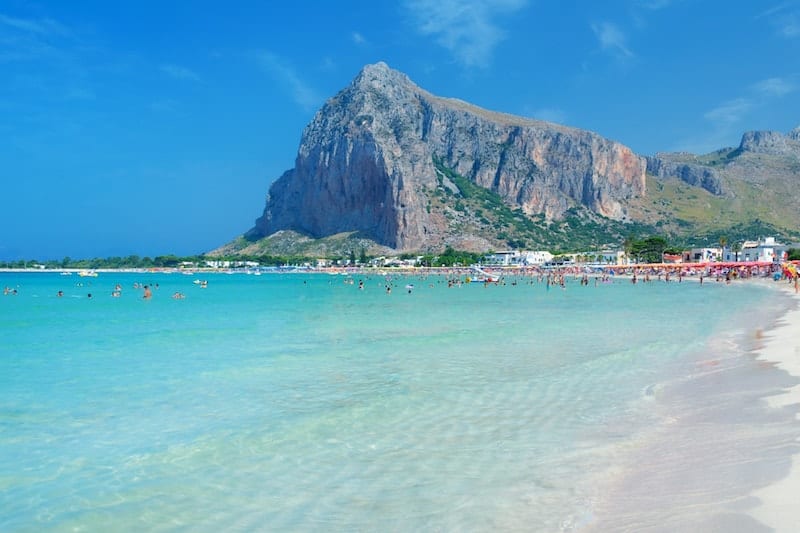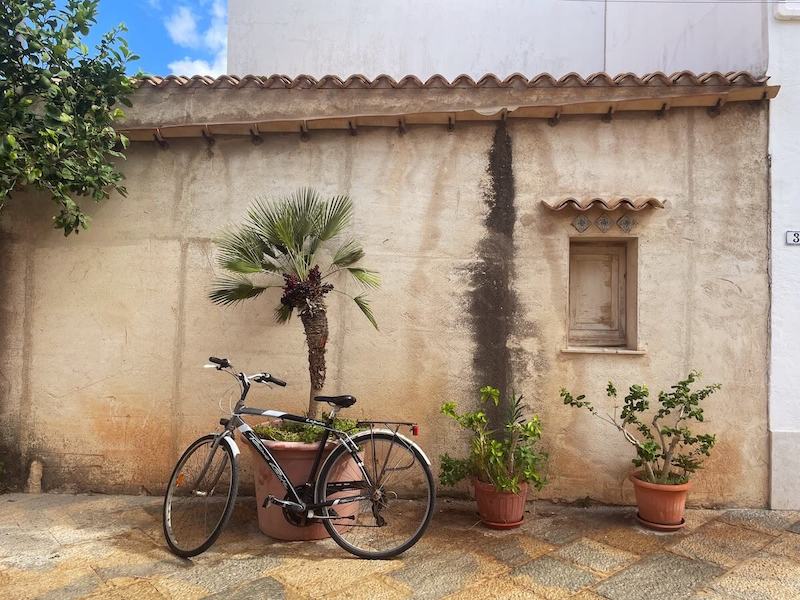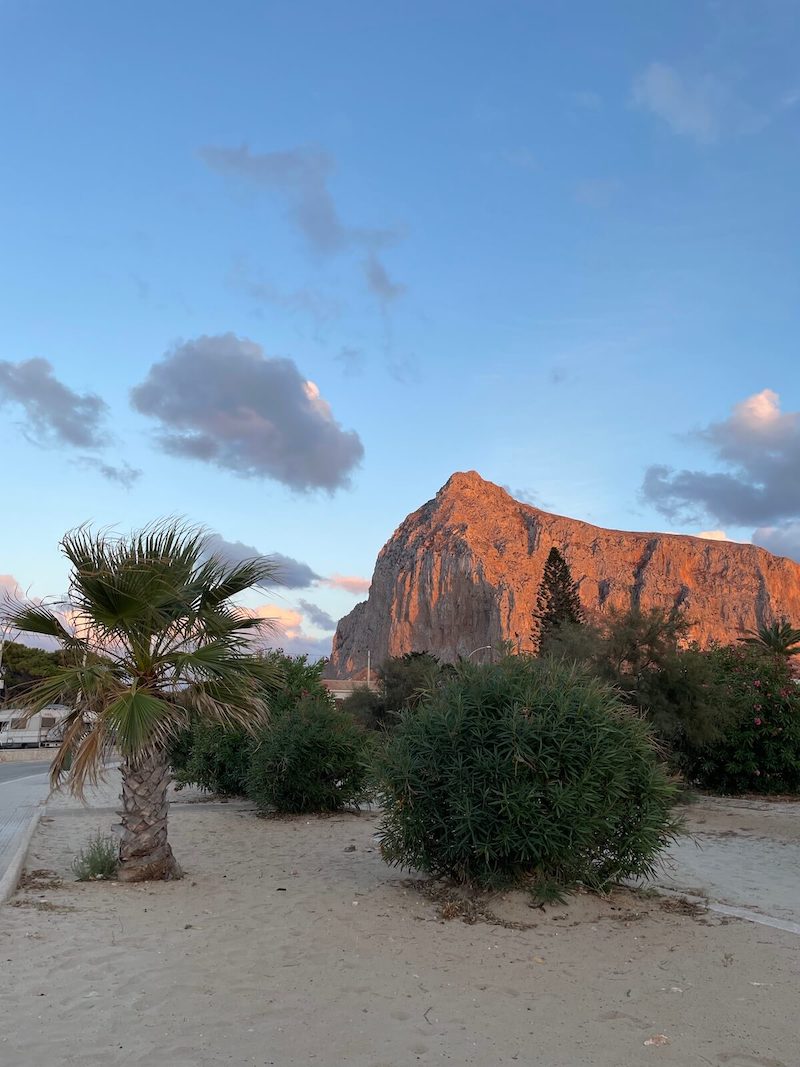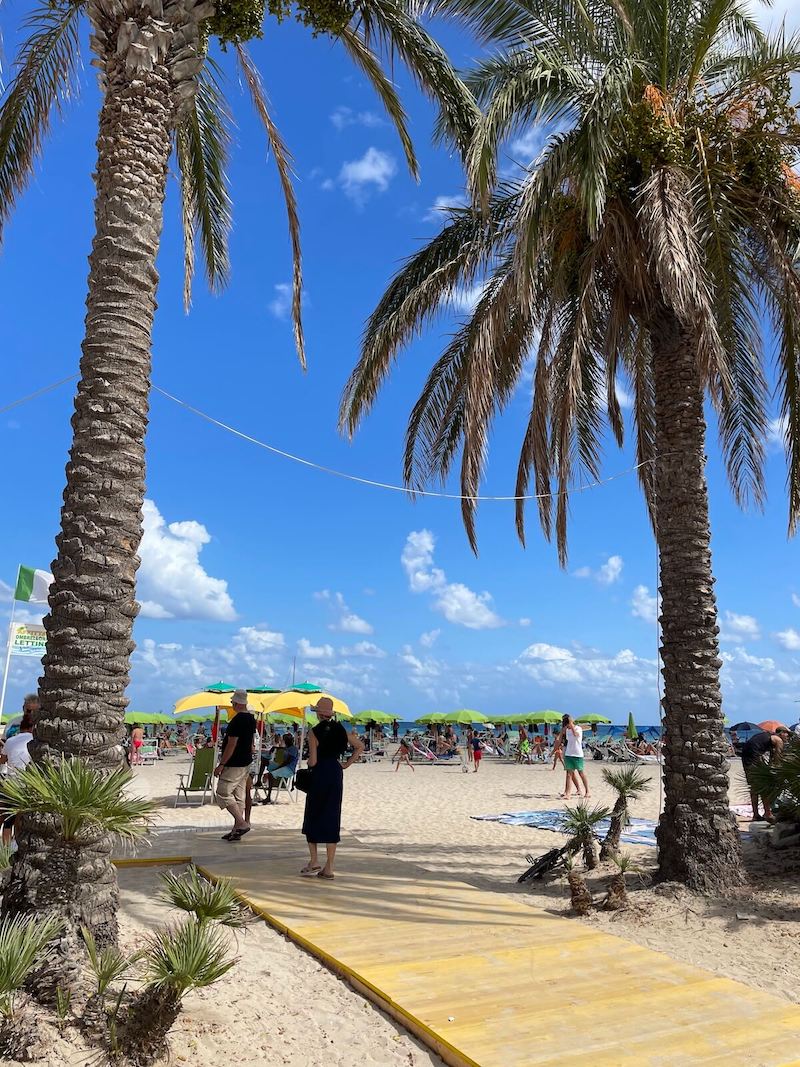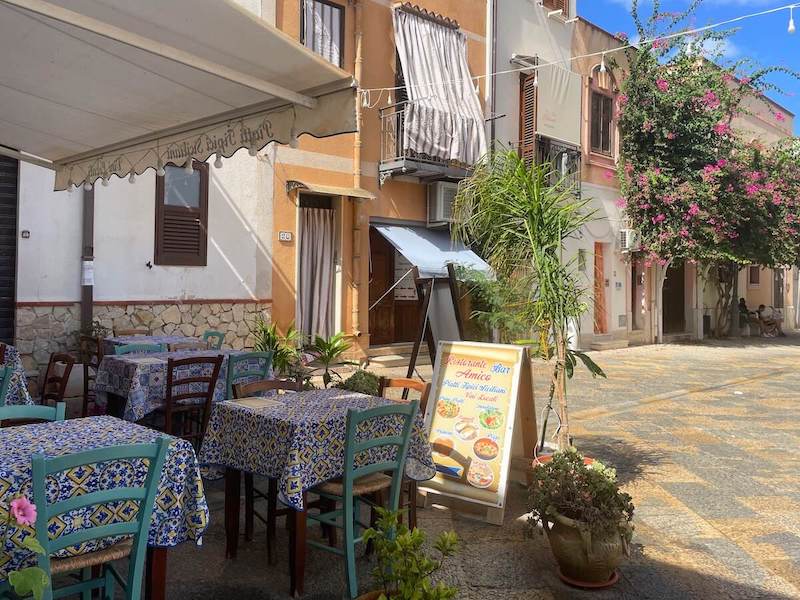San Vito Lo Capo is one of Sicily’s most popular beach resorts thanks to its vast white sand beach and turquoise sea.
It’s one of the best sandy beaches in Italy, no doubt. It’s far from quiet but, for some reason, Sicily’s west coast has yet to be discovered by international tourists en-masse (perhaps because they make a beeline for the popular parts of the East coast).
Here’s a quick guide to what you can expect from a trip to San Vito Lo Capo.
Where is it?
San Vito is at the northwest tip of Sicily, between Trapani and Castellammare del Golfo.
It’s west of Palermo, the drive takes 1 hour and 30 minutes on good roads.
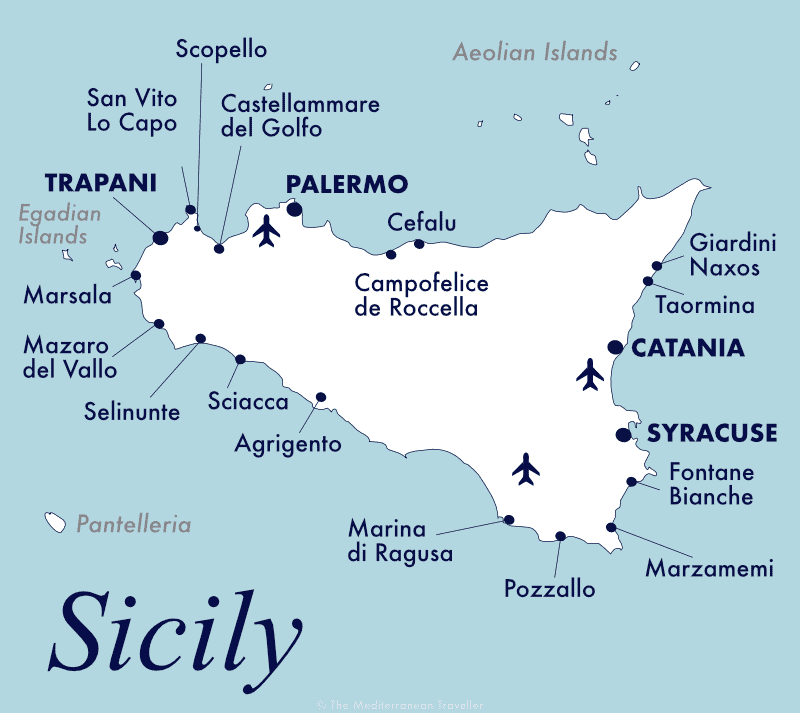
What’s the vibe like?
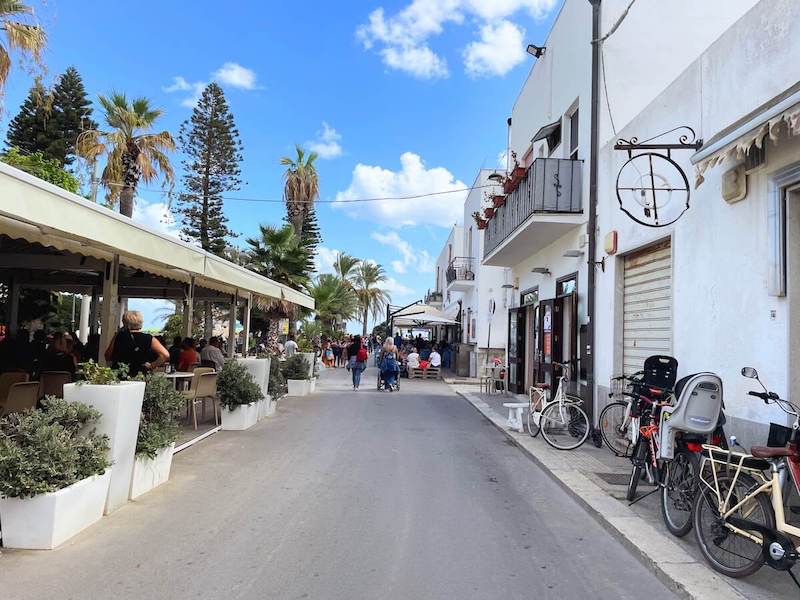
San Vito Lo Capo is a lively and unpretentious family resort with a good array of activities on offer. The beach is lined with rows of colourful parasols and sun loungers belonging to the beach clubs (lidos).
The flat grid of streets behind the beach is filled with whitewashed square building, its windswept streets dotted with cacti and palms. It was originally a holy sanctuary and pirate outpost.
Its architecture gives it a very different feel to Sicily’s baroque towns. If you squint you could easily be somewhere in Moorish Spain or Morocco.
Most of the signs and menus you’ll see around are in Italian (some with translations) but I didn’t have a problem ordering in English.
This is a town that’s almost entirely geared towards summer tourism. The main streets are packed with restaurants and clothing boutiques.
There are a handful of bars but not much in the way of clubs, and don’t expect many food choices beyond the local Sicilian fare (although there are a few riffing on their North African influence). There are numerous festivals throughout the year including the famous CouscousFest, a celebration of San Vito’s local dish.
San Vito has a big fishing fleet and this part of Sicily’s coastline is lined with tonnara – old tuna processing plants.
It sits at the foot of Monte Monaco, a vast limestone crag typical of the landscape here which provides plenty of hiking and climbing opportunities and a slightly alternative vibe outside the summer peak.

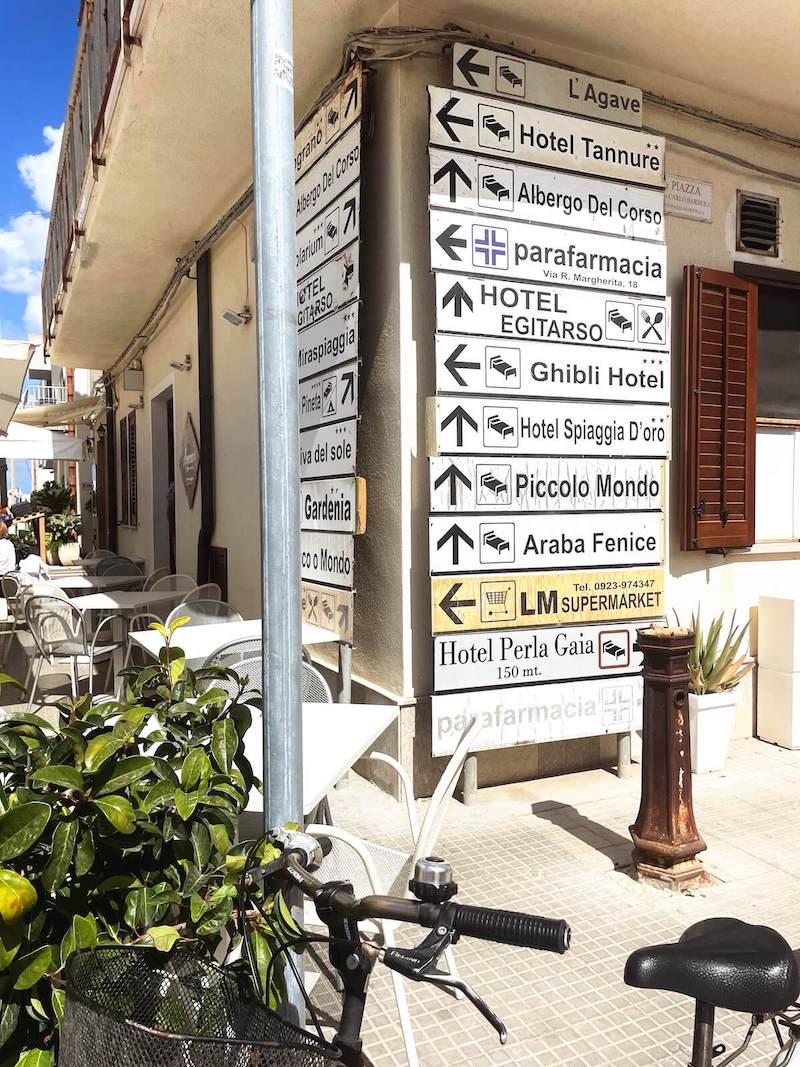
What to see and do
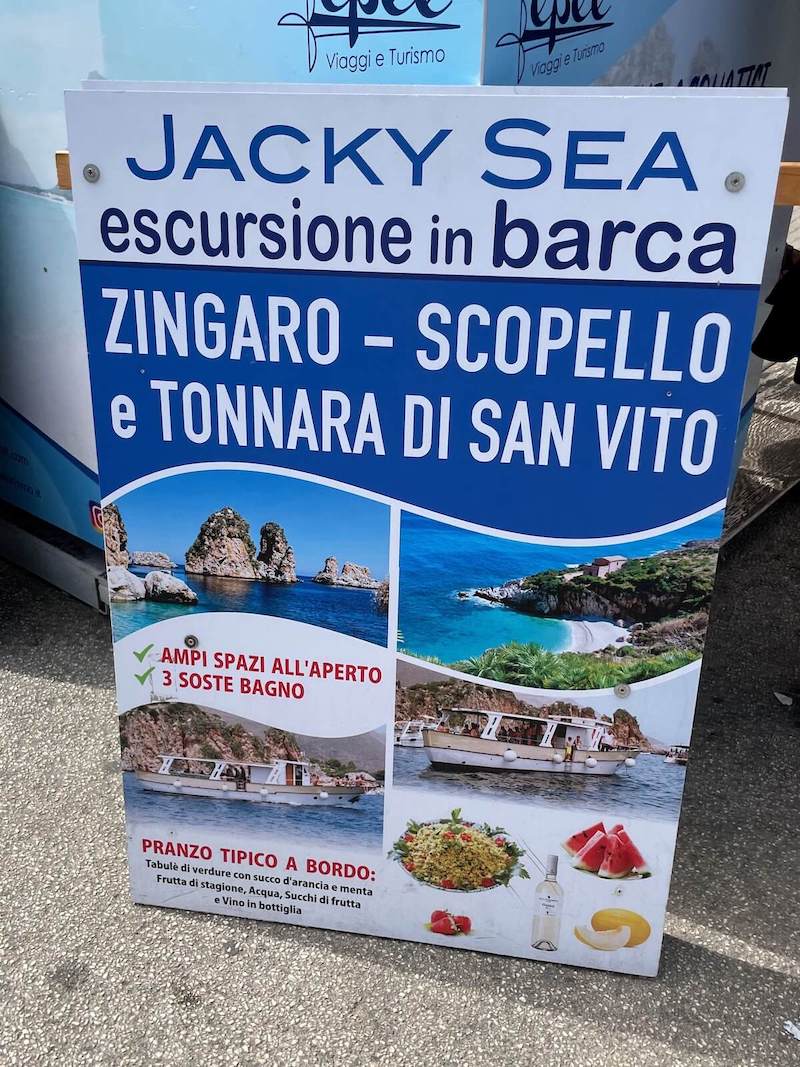
San Vito has a small handful of historical landmarks:
- the Torre del Santuario, a square 15th-century church-fortress in the centre of town in the Arab-Norman style
- a lighthouse at the western end of the cape
- the picturesque Santa Crescenzia Chapel behind the town
- the Torrazo near the harbour
It’s big on outdoor activities though.
The most popular excursions are the boat trips to the Zingaro Nature Reserve and the Egadi Islands.
San Vito has a small harbour with plenty of day boats to choose from. There are numerous stands and agencies in town which will talk you through your options. It’s popular for families and groups of friends to rent a private boat for the day. You can book whilst you’re there or in advance, here are some examples:
- Half-day boat tour to Zingaro Reserve and Scopello
- Full-day boat tour to Zingaro Reserve and Scopello
- Private full-day boat trip
Rock climbing is another popular pastime – ask at Timbuktu Hostel for information about lessons. They have a bouldering wall and also organise other activities such as biking Monte Cofano which is to the south of San Vito.
You’ll also find SUP, diving, kayaking, paragliding, quad-biking, and snorkelling trips available in town and at the harbour.
Some of the beach clubs have pedalos and kayaks for rent.
The 7km hiking trail along the coast at Zingaro Nature Reserve is another popular activity but it’s tricky without a car as there’s no public transport. If you don’t have a car it’s easiest to stick to the boat trips, or ask around at the travel agencies and they might be able to help you out with a transfer.
If you’re renting a car for the day you can combine the hike with a visit to the photogenic Scopello and nearby Castellammare del Golfo. The trail isn’t circular so you’ll need to budget time for doubling back.

What’s the beach like?

The beach at San Vito Lo Capo is undeniably one of the most beautiful beaches in Sicily.
It’s clean and wide enough for 8-9 rows of sun loungers, and the sand is a fine pale gold. The seabed is smooth and sandy and the water is shallow and crystal clear.
There are a few free sections of the beach but most are occupied by lidos, Italian beach clubs. You’ll pay upwards of €15 for a pair of loungers but also get access to changing rooms, showers, and toilets. Lifeguards are during the high season only.
There aren’t really any beach clubs in the international sense (Bali beds and plush sun loungers, electronic music, international food and cocktails) and not all of the lidos have food or drink available so check before purchasing your ticket.
Expect it to be very busy in the summer. In the shoulder season, especially during the week, it will be much quieter. You might even find the loungers packed up.
There are hawkers working the beach but they’re generally pretty laid back.
No other sandy beaches are within walking distance of town, the surrounding coastline is rocky and best explored by boat.



How to get there and around
San Vito Lo Capo is a 1-hour drive from Trapani-Birgu International Airport, a small airport to the south which is served by a few budget carriers (I flew there from London Stansted).
It’s just over an hour in the car from Palermo International Airport.
Public transport is limited. There are several buses a day between San Vito Lo Capo and Trapani but you’ll have to switch buses to get to the airport. Same for Palermo however the buses are less frequent. Booking in advance is recommended as this route is popular with locals. There is no kiosk for information or tickets, but here’s the location for the bus stop.

San Vito Lo Capo attracts many visitors from around Sicily so the parking facilities are good.
Once you’re here, it’s small, flat, and walkable. If you’re staying at the far eastern end of town you might want to hire a bike to get around.


Accessibility:
San Vito is flat and no steps are required to reach the beach from the road, which runs up to or alongside the beach at several points (but not along all of it). As is common in Sicily there are many ‘surprises’ in the middle of sidewalks such as signposts or pots.
The roads aren’t too busy though, and there’s plenty of parking available including right by the beach. There’s a dedicated section of beach for wheelchair users.
Prices
Prices in San Vito Lo Capo reflect its popularity – food and accommodation are both average to above average depending on timings. Rooms book up quickly during the summer and CouscousFest (which is in September).
There are many restaurants offering high-end fish and seafood dishes, but you can also find cheap pizza to take away. However supermarkets are limited and expect to pay a premium for international dishes (if you can find any).
Prices for sun loungers/lido access vary by time of year and demand but expect to pay a minimum of 15€ for a pair outside peak times.




Don’t leave without trying…

San Vito Lo Capo is the spiritual home of couscous in Sicily. It also has one of the biggest fishing fleets around so you’ll find many variations of fish and seafood couscous around town, as well as some dishes with North African flavours. There are several restaurants specialising in couscous including Ristorante Profumi di Cous Cous.
For afters, head to Cavalluccio Marino for the traditional caldofreddo dessert. It means ‘hot-cold’ and is a delicious combination of sponge cake soaked in liqueur, ice cream, whipped cream, and hot chocolate sauce. It’s probably best shared though, it nearly finished me off!
Where to stay

Most of the accommodation in San Vito Lo Capo is traditional and aimed at the domestic mid-market.
The best hotel in town is the 4-star beachfront Hotel Capo San Vito by Geocharme (pictured above). It might be looking a little worn around the ages, but it really has the best location right on the beach (not across the road like most of the others). Decor is Africa-themed and there is a wellness centre and a restaurant but no pool.
For modern rooms in the 3-star range:
- Hermes Hotel – for airy interiors.
- Hotel Ghibli – for comfy and central.
- Hotel Artemide – has a small pool.
Backpackers and solo travellers should check in to Timbuktu Hostel which has a bouldering wall and organises lots of outdoor and social activities (and the owner has an excellent collection of African drums).

Read more:
Where to Stay in Sicily: Ultimate Beach Resort Guide
10 Most Beautiful Beaches in Sicily
Image credits: San Vito with turquoise sea: © nadisja / Adobe Stock
All other images © The Mediterranean Traveller

